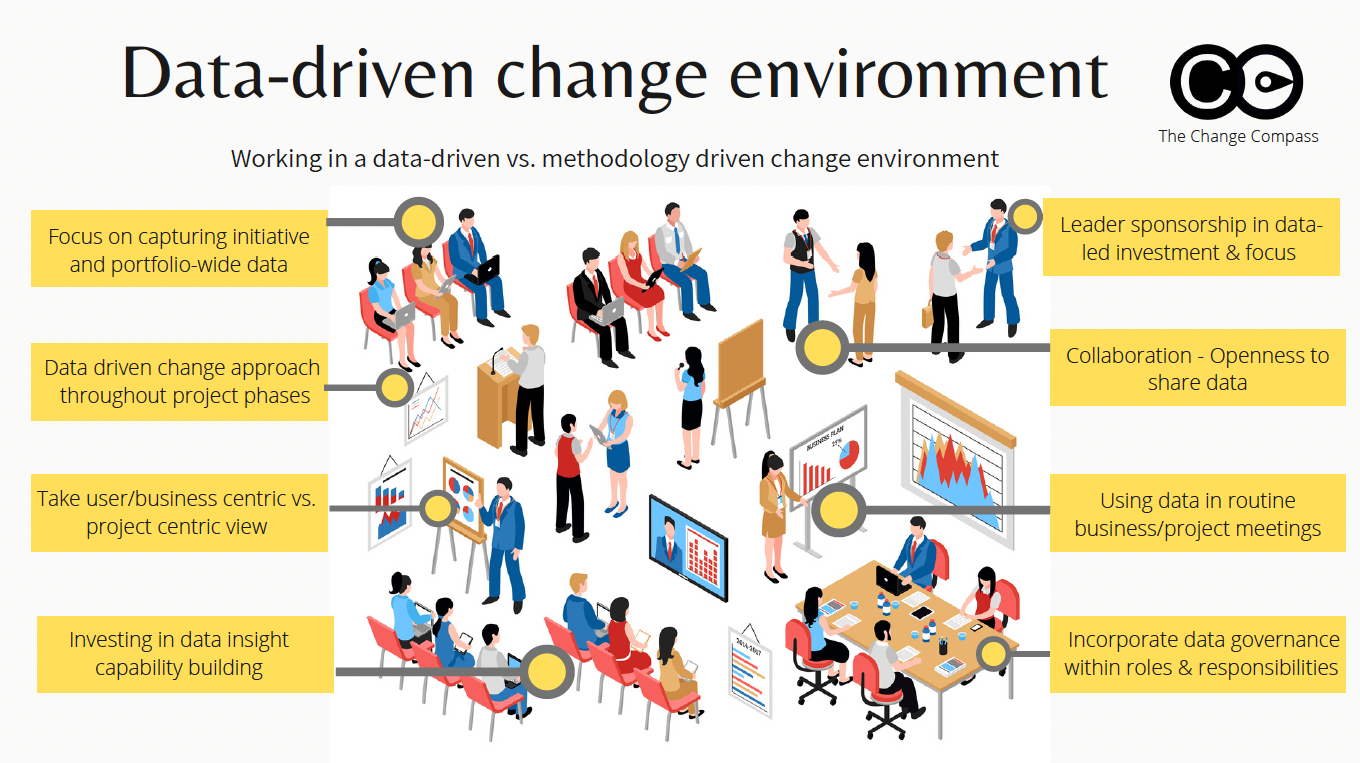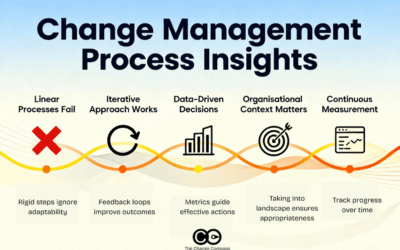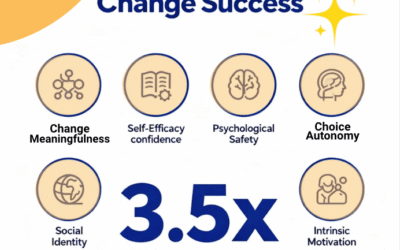Data is king. This is especially in current times of uncertainty. With data comes power, influence and outcomes. Lots of disciplines have leveraged the power of data to drive better outcomes. Marketers would not dream of doing any part of their job without data. Operations is driven by data in all aspects of managing the business. Even Human Resources is heavily focused on numbers, pay and benefits, employee sizes and structures, cultural measurements and employee sentiment trends.
For change management data must also be the core pillar that drives our work.
Unfortunately for a lot of practitioners the only data used tends to be sizing number of people impacted, counting the number of people being trained, training evaluation scores or change readiness sentiment surveys.
Surely, there is more we can do to adopt a more data-driven change approach?
Absolutely! Stay tuned for our upcoming article on how to do this.
In the meantime, here is an infographic on painting a picture of what a data-driven change environment looks like.
There are 8 core components:
- Focus on capturing initiative and portoflio-wide data
- Data-driven change approach throughout project phases
- Take user/business centric versus project centric view
- Investing in data insight capability building
- Leader sponsorhip in data-led investment and focus
- Collaboration/Openness to share data
- Using data in routine business/project meetings
- Incorporate data governance within roles and responsibilities
To download the infographic, click here.






